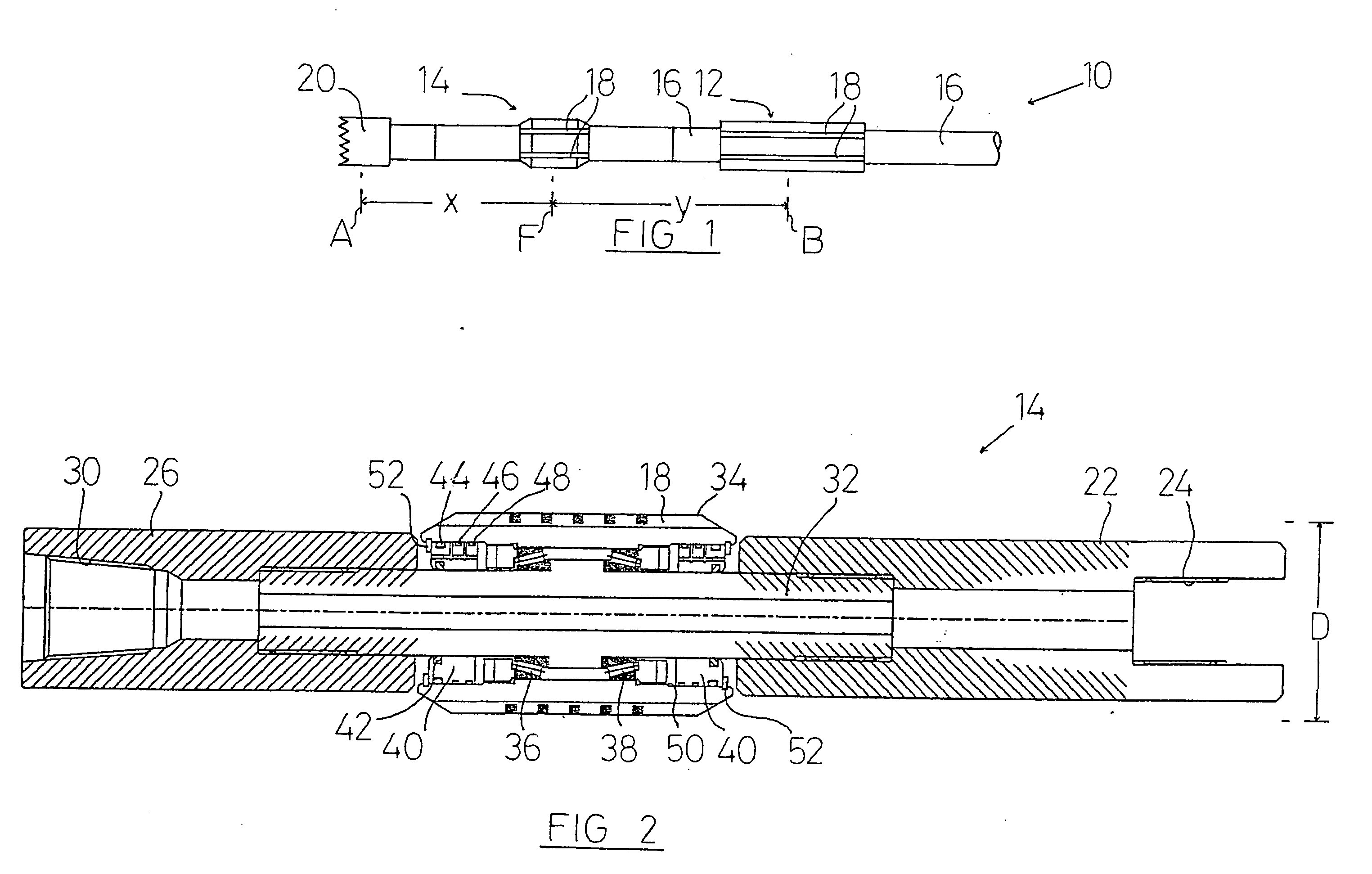Steerable drill bit arrangement
- Summary
- Abstract
- Description
- Claims
- Application Information
AI Technical Summary
Benefits of technology
Problems solved by technology
Method used
Image
Examples
Embodiment Construction
[0026] As shown in FIG. 1, the steerable drill bit arrangement 10 comprises a steering component 12 and a stabiliser 14. The steering component 12 and the stabiliser 14 are located in the drill string 16 adjacent the drill bit 20, with the stabiliser 14 being located between the steering component 12 and the drill bit 20. The steering component 12 serves to decentralise the drill string 16 within the borehole (not shown), so that the drill bit 20 is forced to deviate from a linear path. For example, if the steering component is used to force the drill string 16 downwardly in the orientation shown, then the drill bit 20 will be forced upwardly, the stabiliser 14 acting as the fulcrum.
[0027] In known fashion, the steering component 12, the stabiliser 14, and the pipe sections which make up the drill string 16, are hollow so as to allow the passage of mud to the drill bit 20. Also, the steering component 12 and the stabiliser 14 include channels 18 which permit the passage of mud from...
PUM
 Login to View More
Login to View More Abstract
Description
Claims
Application Information
 Login to View More
Login to View More - R&D
- Intellectual Property
- Life Sciences
- Materials
- Tech Scout
- Unparalleled Data Quality
- Higher Quality Content
- 60% Fewer Hallucinations
Browse by: Latest US Patents, China's latest patents, Technical Efficacy Thesaurus, Application Domain, Technology Topic, Popular Technical Reports.
© 2025 PatSnap. All rights reserved.Legal|Privacy policy|Modern Slavery Act Transparency Statement|Sitemap|About US| Contact US: help@patsnap.com


